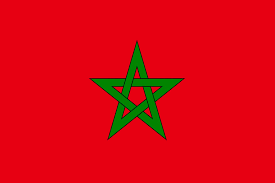Language/Moroccan-arabic/Grammar/Relative-Pronouns
 Հայերէն
Հայերէն Български език
Български език 官话
官话 官話
官話 Hrvatski jezik
Hrvatski jezik Český jazyk
Český jazyk Nederlands
Nederlands English
English Suomen kieli
Suomen kieli Français
Français Deutsch
Deutsch עברית
עברית हिन्दी
हिन्दी Magyar
Magyar Bahasa Indonesia
Bahasa Indonesia فارسی
فارسی Italiano
Italiano 日本語
日本語 Қазақ тілі
Қазақ тілі 한국어
한국어 Lietuvių kalba
Lietuvių kalba Νέα Ελληνικά
Νέα Ελληνικά Şimali Azərbaycanlılar
Şimali Azərbaycanlılar Język polski
Język polski Português
Português Limba Română
Limba Română Русский язык
Русский язык Српски
Српски Español
Español العربية القياسية
العربية القياسية Svenska
Svenska Wikang Tagalog
Wikang Tagalog தமிழ்
தமிழ் ภาษาไทย
ภาษาไทย Türkçe
Türkçe Українська мова
Українська мова Urdu
Urdu Tiếng Việt
Tiếng ViệtAs a Moroccan Arabic language teacher with 20 years of experience, I can tell you that understanding relative pronouns is essential to becoming proficient in the language. In this lesson, you will learn how to use relative pronouns in Moroccan Arabic.
What are Relative Pronouns?
Relative pronouns are words that link two elements in a sentence to show a relationship between them. In Moroccan Arabic, these pronouns are:
- دْيَالْ /dyaal/ : which, that (used with masculine and feminine nouns)
- لْلّي /llī/ : who, whom, which, that (used with masculine and feminine pronouns)
- وَلْيْ /waly/ : who, that (used only with masculine nouns)
- بْلي /bli/ : who, whom, which, that (used only with feminine nouns)
- أَش /ash/ : that (used for things)
How to Use Relative Pronouns in Moroccan Arabic
Relative pronouns function like conjunctions in that they join parts of a sentence together. Consider these two sentences:
1. الرَّجُلْ غَادِي يِجِي /rrajul ɣadi yiji/ - The man is coming.
2. الرَّجُلْ اللّيْ غَادِي يِجِي خُوْدُوْ لَيْهِ /rrajul lli ɣadi yiji khūdu laih/ - Take the man who is coming.
In the second sentence, the relative pronoun "اللّيْ /llī/" connects "الرَّجُلْ /rrajul/" (the man) and "غَادِي يِجِي /ɣadi yiji/" (is coming) to form a relative clause.
Here are some more examples:
| Moroccan Arabic | Pronunciation | English |
|---|---|---|
| الفلان دْيَالْ مْكَانْ /lfllan dyaal mkan/ | /al-flan djaal mkaan/ | The guy who is from that place |
| اللّيْ كَتِيْحَبْ /llī kati-ḥab/ | /al-li kati-hab/ | The one who loves |
| العَرُوْسَةْ بْليْ لَابْسَةْ زْرُوْقْ /lʕruːsa bli labːsa zruːq/ | /al-ʕruːsa bli labbsa zruːʔ/ | The bride who is wearing blue |
Note the different relative pronouns used, depending on the gender or number of the noun referred to.
Relative Pronouns in Context
Understanding how to use relative pronouns can come in handy when listening to or watching Moroccan movies, TV shows, or songs. Here are some popular examples:
- قُوْتُوْا اللّيْ رَادْ /quutū llī rād/ : Take the one who is coming back (song lyric)
- وَلْيْ آشْ دَارْ دَيَالْكُمْ /waly ash dār dyalkum/ : The one who has your house or property (movie title)
Conclusion
In conclusion, using relative pronouns in Moroccan Arabic allows speakers to link together parts of sentences to form cohesive thoughts. Understanding the differences and nuances between the different pronouns can help learners speak and comprehend Moroccan Arabic more effectively.
Remember to practice using these pronouns in context, and feel free to ask for feedback from your Moroccan Arabic teacher or language partner.
Shukran bzaaf!
Sources
Related Lessons
- The Inclusive Case in Moroccan Arabic
- Indirect Questions
- Directional Prepositions
- Pronunciation
- Gender and Plurals
- How to use “can” in Moroccan Arabic
- Formation of the Conditional
- Conditional Mood
- Indefinite Articles in Moroccan Arabic
- How to use “to be” with names and places

